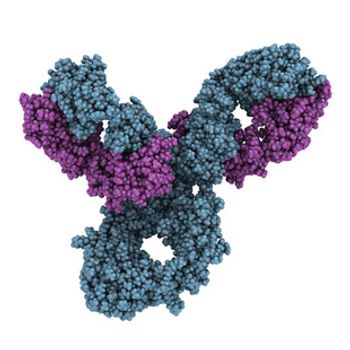
Kelly Davio
Articles by Kelly Davio


Atherosclerotic cardiovascular disease (ASCVD) is not only a leading cause of mortality among US adults, but also responsible for high medical costs that burden both the healthcare system and individual patients. New research shows that 1 in every 5 patients with ASCVD is unable to afford his or her medical bills, and even among patients with insurance, financial hardship related to medical costs is prevalent.

On February 6, the FDA approved caplacizumab-yhdp (Cablivi), the first therapy specifically indicated for the treatment of acquired thrombotic thrombocytopenic purpura (aTTP) in adults. The drug is approved for use in combination with plasma exchange and immunosuppressive therapy.

A recent observational study, which used data covering more than half of the US population, found that the incidence of cancer linked to obesity is on the rise in young adults.

A recent study sought to develop a robust predictive model for patients whose disease will transform into acute myeloid leukemia, a complication that is associated with a poor prognosis.

Prior to the Affordable Care Act, many adults leaving jail or prison were ineligible for Medicaid because coverage was not available to most adults without children. However, by mid 2018, 33 states and the District of Columbia had expanded Medicaid eligibility to include all adults with incomes below 138% of the federal poverty level, which has made Medicaid available to more individuals upon their release.

A recent study reports that monocytes from patients with myeloproliferative neoplasms (MPNs) have a defective negative regulation of Toll-like receptor (TLR) signaling that allows for the unrestrained production of tumor necrosis factor alpha after TLR activation. Additionally, the authors write that TLR signaling not only contributes to chronic inflammation in patients with MPN, but also may predispose individuals to acquire MPNs.

High drug prices have long been a burden on the US healthcare system, and recent weeks have seen a burst of Congressional activity aimed at driving down rising drug costs. But is Congress all talk and no action on this key issue?

The FDA has issued an update to its 2015 draft guidance on developing drugs to treat rare diseases.

Breast cancer risk estimation models identify women who are at high risk based on a variety of factors, and women who are identified as being at high risk may be able to reduce their chance of breast cancer through preventative measures such as prophylactic surgeries or chemoprevention medications. However, uptake of these preventative treatments varies among racial groups, new research from The Ohio State University finds that racial disparities in healthcare are to blame.

A recent review explores the current understanding of the molecular effects of ruxolitinib and its place in the evolving landscape for the treatment of myeloproliferative neoplasms (MPNs).

For the 25th consecutive year, the cancer mortality rate in the United States has declined, according to The American Cancer Society’s annual report on cancer rates and trends. The overall 27% drop in mortality rate translates into 2.6 million fewer deaths from cancer between the years 1991 and 2016.

While a common genetic mutation among patients with polycythemia vera (PV) is V617F in exon 14 of the Janus kinase 2 (JAK2) gene—which activates the tyrosine kinase—it has been reported that patients with V617F-negative PV have mutations in exon 12 of JAK2. Exon 12 mutations are involved in approximately 3% of patients with PV, and these patients often have reduced erythroblasts in the bone marrow and hypercellular bone marrow.

The FDA has approved Stemline Therapeutics’ tagraxofusp-erzs (Elzonris), the first drug approved to treat blastic plasmacytoid dendritic cell neoplasm (BPDCN) in adults and in pediatric patients aged 2 years or older.

While low-grade adverse events may not be providers’ primary reporting focus, accumulated low-level toxicities have the potential to reduce patients’ quality of life.




An estimated 553,000 individuals in the United States are homeless on any given night, yet few data are available to give insight into the patterns of acute illness in this particularly vulnerable population.

Primary care clinics are beginning to integrate more patient-reported outcomes into practice, especially with implementation of the Patient-Reported Outcome Measurement Information System. However, little is known about whether patients perceive reporting these outcome measures as useful.

The year 2018 was a banner year for biosimilars, with the number of FDA-approved biosimilar products nearly doubling, and with major policy, business, and regulatory developments that moved the biosimilars marketplace forward. Here are 5 of the top developments in biosimilars for the past year, as reported by The Center for Biosimilars®, a sister site of The American Journal of Managed Care®.

Researchers at the Massachusetts Institute of Technology (MIT) New Drug Development Paradigm (NEWDIGS), an entity that brings together global leaders in a program that designs, evaluates, and initiates advancements that are too complex to be addressed by individual organizations, are working to solve the problem of ultra–high-cost treatments, including gene therapies.

While weight loss surgery is safe and effective, only 0.4% of patients who qualify to receive such surgery actually go ahead with a procedure.


A newly published study from the University of Pennsylvania School of Nursing finds that heavy alcohol consumption poses a risk for suboptimal long-term weight loss among patients with a diagnosis of type 2 diabetes.

A study published this week suggests that some anticancer treatments speed up the biological aging process, and this aging effect could be linked to the cognitive decline experienced by patients undergoing cancer treatment.

Back pain is a leading cause of disability, and the proportion of adults over age 65 who have back pain is increasing in the United States, particularly among women. Now, research has demonstrated that persistent back pain is also linked with an increased risk of death in older women.

During a joint meeting of the FDA’s Anesthetic and Analgesic Drug Products Advisory Committee and Drug Safety and Risk Management Advisory Committee, members voted in favor of approval for Mallinckrodt’s MNK-812, an abuse-deterrent formulation of oxycodone.

Even if gene therapies do prove to be cost-effective in providing patients with much-needed treatments for genetic diseases, the question of how to pay for these therapies remains largely unanswered.

While obesity is a risk factor for cancer and can promote cancer growth and recurrence, research published this week has found that, paradoxically, obesity can make checkpoint inhibitors more effective in treating cancer.



